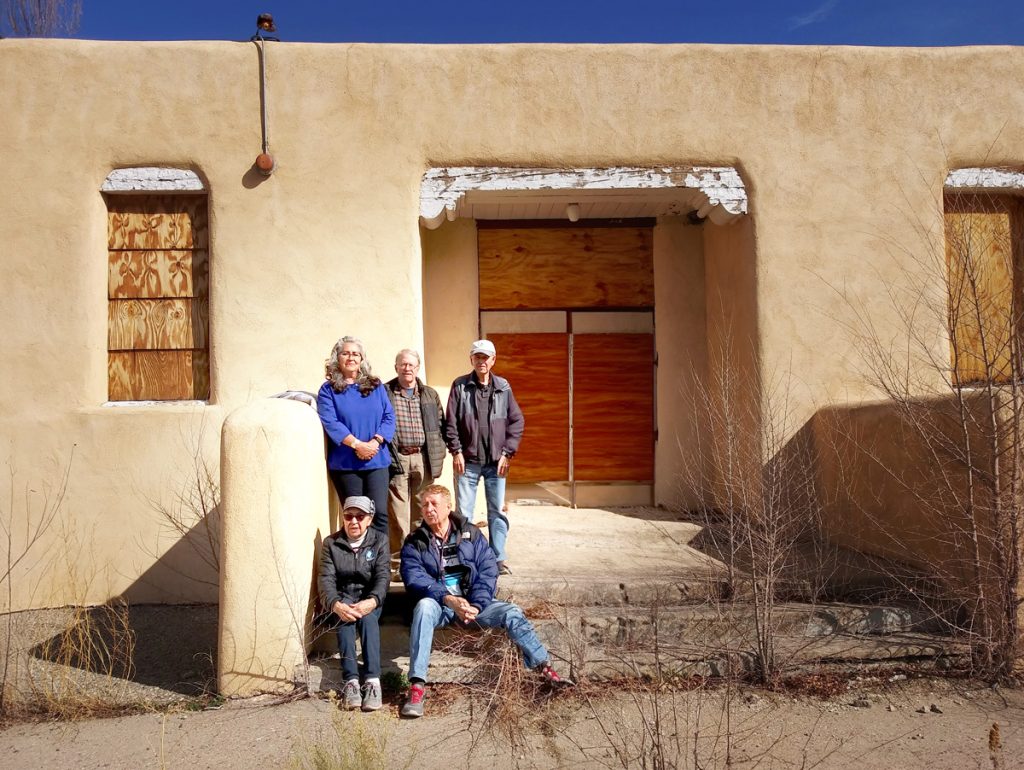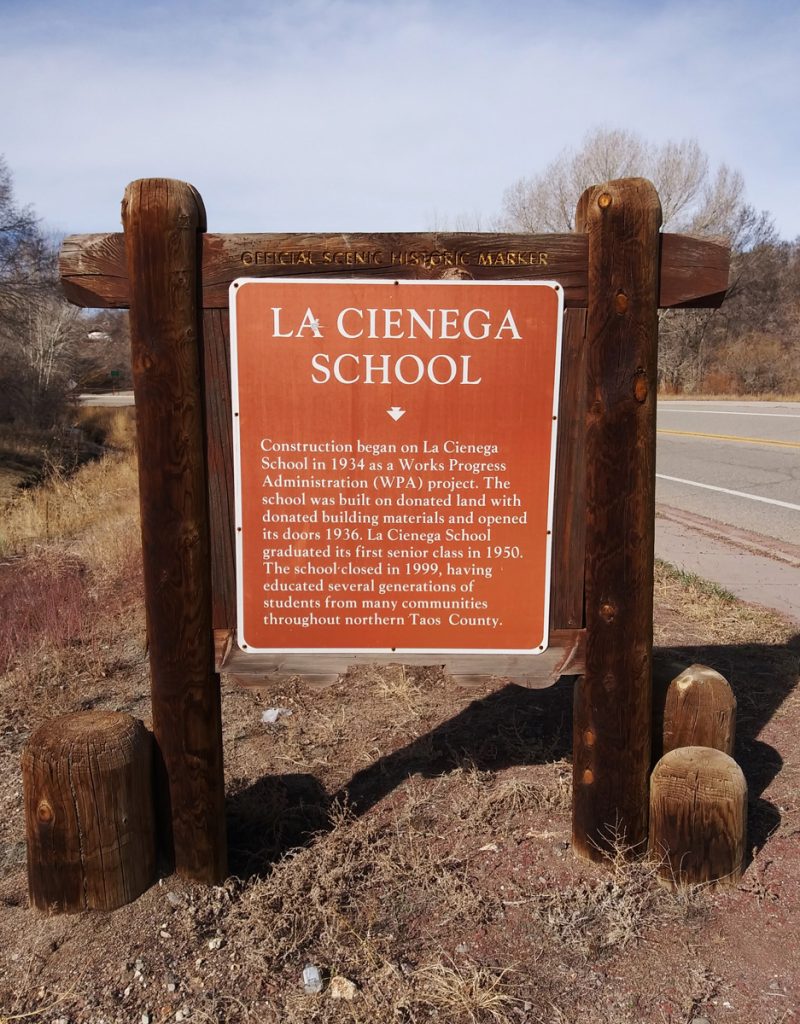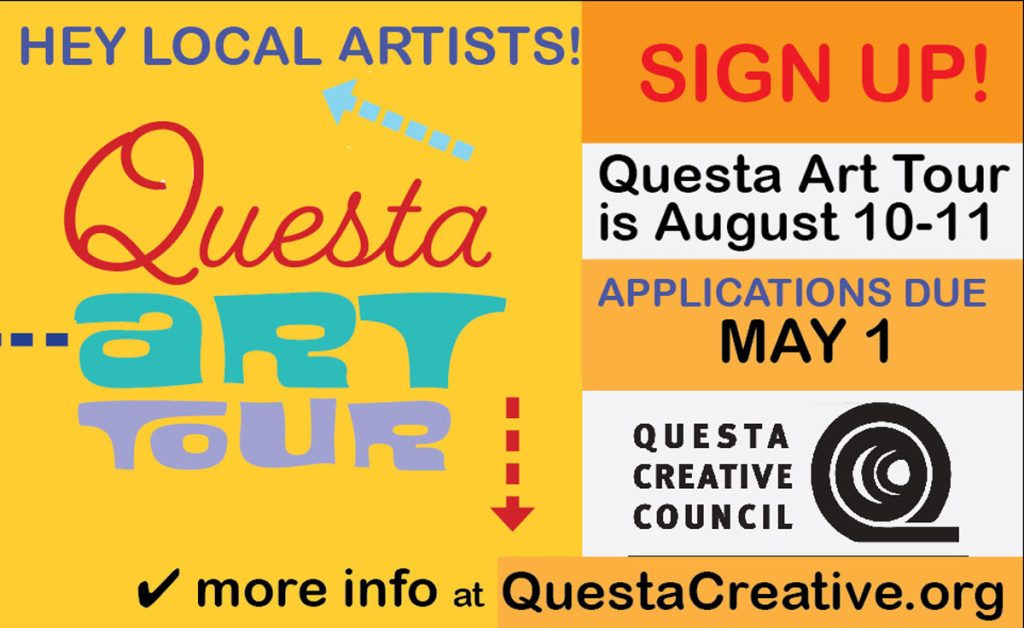

Questa is still in the throes of economic recovery. The 1930s was another period of dire recovery following the Great Depression. At that time, President Franklin D. Roosevelt signed an Executive Order creating the WPA, the Works Projects Administration.
More than three million unemployed Americans were put to work building over 4,000 new schools and many other public buildings, libraries, hospitals, and other public works. One of those schools was La Cienega, right here in our village.
Construction began in 1934 and the school opened in 1936. Retired history teacher Flavio Cisneros relates that before this, Questa’s little kids went to a small school where the current Parish Center is located and the older kids had to take a bus up to Costilla for high school and were taught by nuns. “I started school at La Cienega at age six,” he said, “in a class called ‘pre-first’ taught by Lucy Gonzales. Each classroom had a wood or coal-burning stove and we kids carried the fuel in from a shed behind the school.”
Manuel Medina recalls playing on the basketball “A” team. “We played Taos, Espanola, Los Alamos, yeah,” he smiled, “we were good.” He graduated from La Cienega in 1954.
Reyna Gonzales taught there, following a family tradition; her uncles and aunt were beloved teachers also. Food Pantry co-founder Jeannie Masters remembers Reyna’s aunt, Cecilia Ortega, teaching her in first grade. Flavio returned to teach there in 1982. Tim Long taught at the same time, remembering his music classes being held in “the shed,” an outbuilding where returning WWII vets had learned woodworking. “My first teaching job was at La Cienega,” Tim said. “The deep history embedded in those thick adobe walls is part of northern New Mexico culture that’s stayed with me for the past 50 years.”
It was First Lady Eleanor Roosevelt who urged the President to add a program to include workers in the arts. As our mission at the QCC is to strengthen community through arts, culture, history, and education, we are so glad of this! Many of the writings, photography, murals, and more that originated in this program are now considered part of the classic American canon. We see this every day here in Questa when we admire the historic photography on our light pole banners. These WPA-era photographs of John Collier, Jr., taken in Questa in the 1930s and ‘40s, are archived in the U.S. Library of Congress, which is where the Questa History Trail team found these images, and used them for trail signage. One of those photos is of a student sitting by the classroom stove, Flavio recalled.
Jeannie Masters observes, “Between the preserved murals in Taos’ old jail building, the historic photos of our own grandparents, and La Cienega School we remember so well, the WPA legacy is important to making the history of our area visible. This visibility is one of the reasons people visit our beautiful area!”
During the immediate aftermath of our mine closure, state and federal agencies held out hands to help. Ideas included the restoration of this building. Many community-strengthening uses were proposed, from a more accessible location for Ancianos and the North Central Food Pantry, a gallery for local art, and even office space for our own Questa Creative Council. The former gym and cafeteria are now being renovated for a new Senior Center (see article on page 7.)
It would be very expensive to accomplish full restoration. Though portions of the site may still be usable, and a memorial sign can inform future generations of the important role the WPA played to education in our rural community.
With the return of our Fiestas traditions, the creation of the Questa History Trail, annual Art Tour and Art Markets that show off our traditional and ongoing artistic talents, it seems like a time to preserve all we can of our unique and important history.

The 9th Annual Questa Art Tour will be held August 10 & 11 this year. Artists, your applications need to be in by May 1, with the small fee of $60, in order to be included in the wide range of publicity and the brochure/map. Go to www.questacreativehttps://questacreative.org/about-the-tour/ where you can download applications and pay online. Or pick up the application at Rael’s Coffee Shop or ArtQuesta. Don’t forget; we need you and the community wants to see your art!



